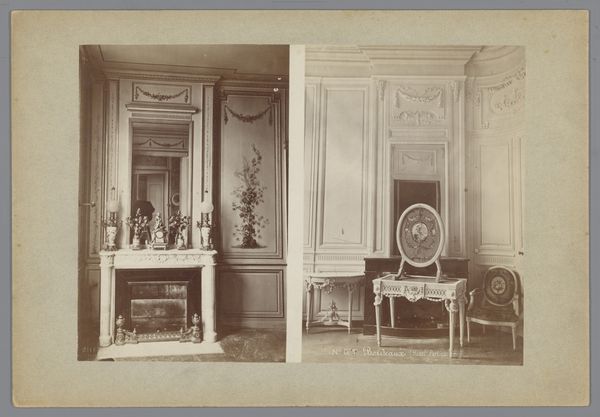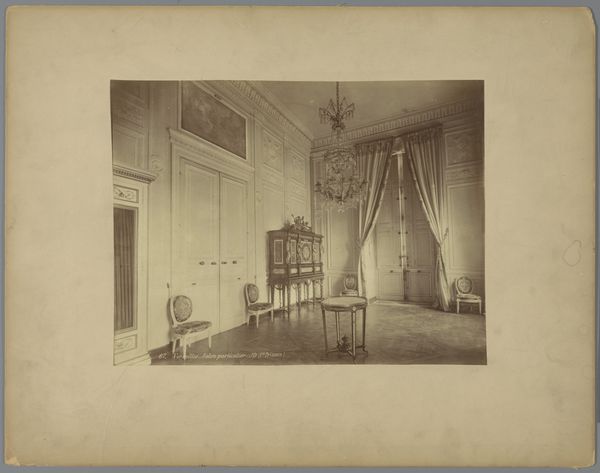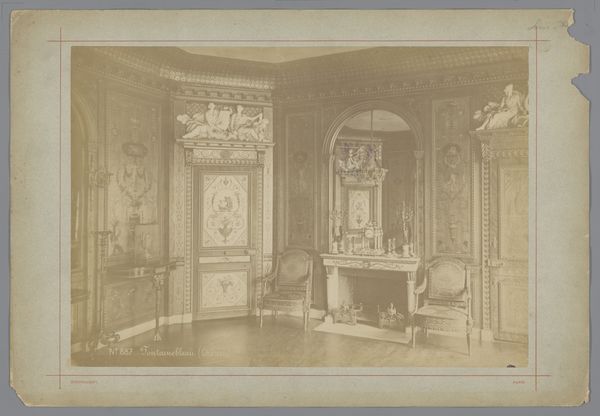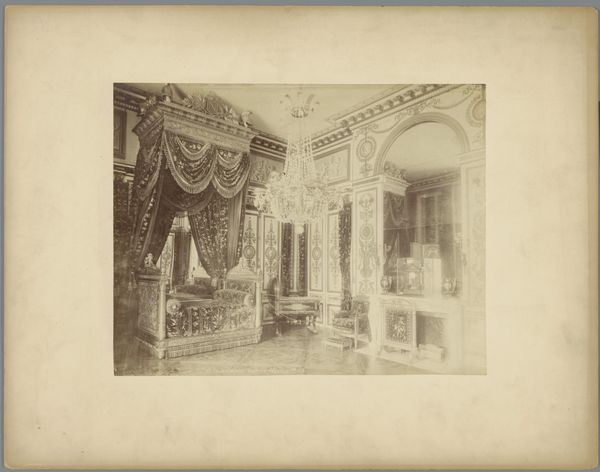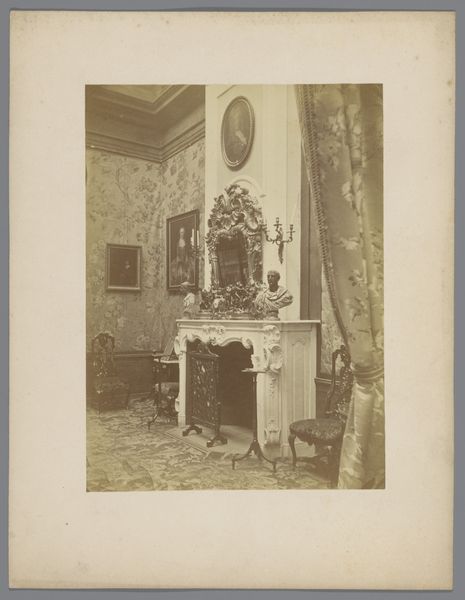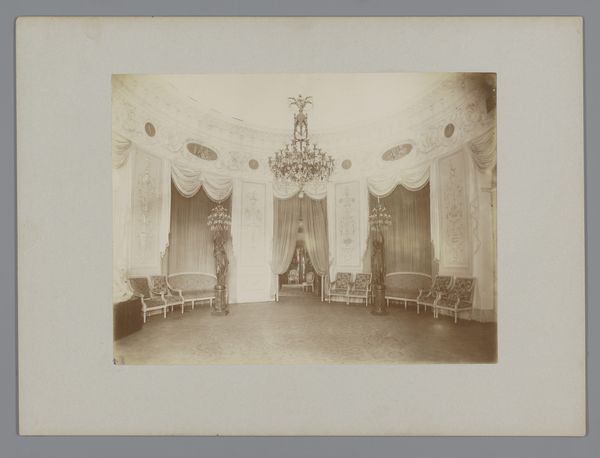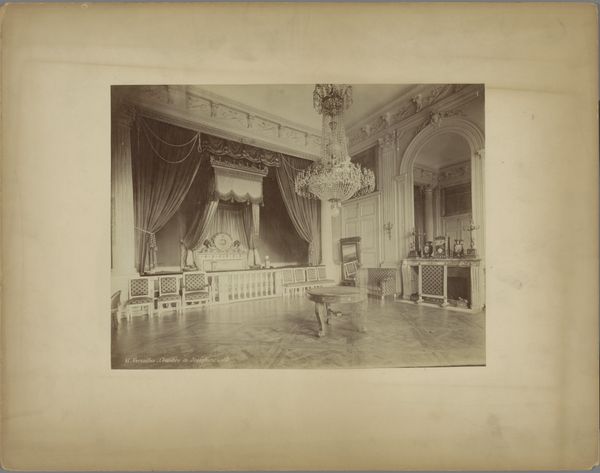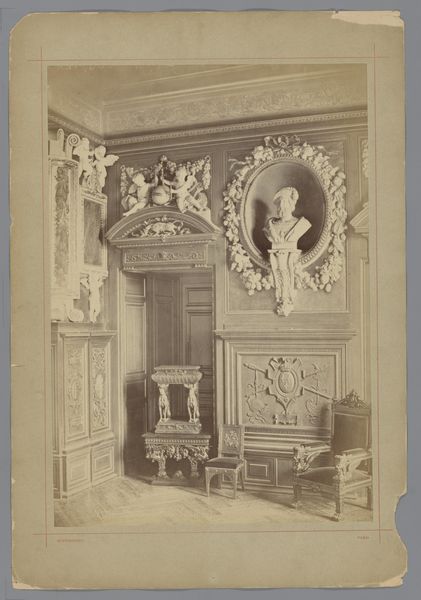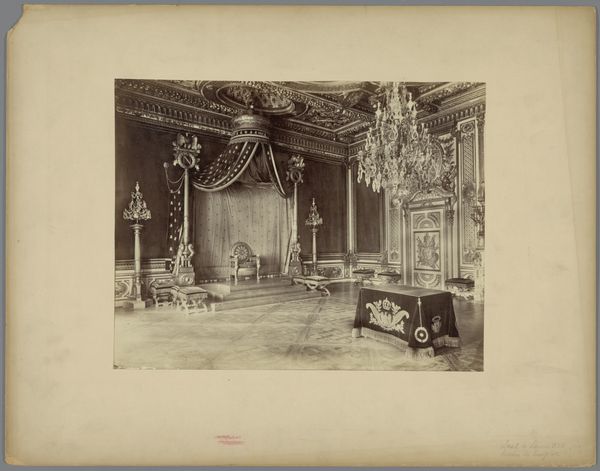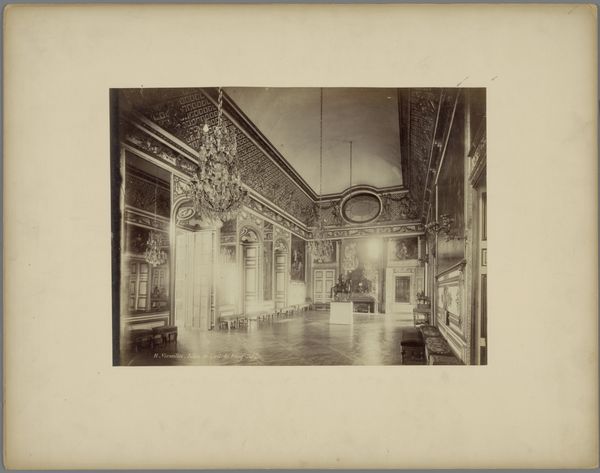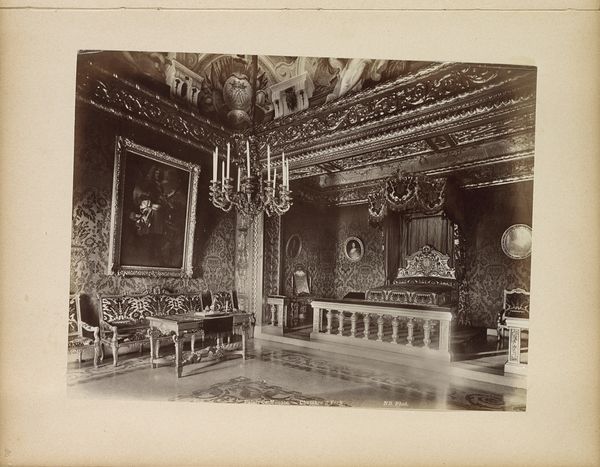
Twee interieurs met een schrijftafel en beschilderde deuren c. 1875 - 1900
0:00
0:00
medericmieusement
Rijksmuseum
Dimensions: height 235 mm, width 346 mm
Copyright: Rijks Museum: Open Domain
Curator: Let's discuss this photographic print entitled "Two Interiors with a Writing Table and Painted Doors" attributed to Médéric Mieusement, created sometime between 1875 and 1900. What strikes you first about it? Editor: Immediately, it's the contrast – the subdued sepia tones create a sense of quietude, but there’s an opulence in the architectural details that pushes back. Curator: Absolutely. Consider the historical context. This photograph was likely taken during a period of significant social and political upheaval in France. The grand interiors depicted can be interpreted as assertions of stability and refined taste in the face of societal change, a re-imagining of Romanticism through photography. Editor: I'm intrigued by how Mieusement frames the two interior spaces. The division created by the angle of the shot offers a clear study of the contrast. Look at the embellishments: the intricate mouldings, painted floral patterns, the careful arrangement of objects on the writing table in one room, and the door’s ornate designs. Each component, through repetition and variation, creates rhythm. Curator: Exactly, these details weren’t coincidental, I think that the composition and perspective subtly reinforced existing class structures by showcasing domestic luxury. The photograph operates on an axis of interiority: inside/outside, public/private and can be interpreted in conversation with emerging theories on social space. Editor: I am very interested in this relationship. I suppose the somewhat dim lighting emphasizes the materiality of these details; how textures interplay under light and shadow. Note the slight blurring around the edges, softening the whole. This adds to its visual appeal. Curator: Precisely, there’s so much at play in that liminal space—between realism and artifice, evidence and narrative. It encapsulates a visual rhetoric about the power structures through interior design of the era. Editor: So we have identified in it how the formal presentation reinforces what at that time was social narrative; it is very satisfying when the architecture tells its own story. Curator: Indeed. The image can incite us to engage with it—and to question it within the complex narratives of its creation and lasting visibility.
Comments
No comments
Be the first to comment and join the conversation on the ultimate creative platform.
